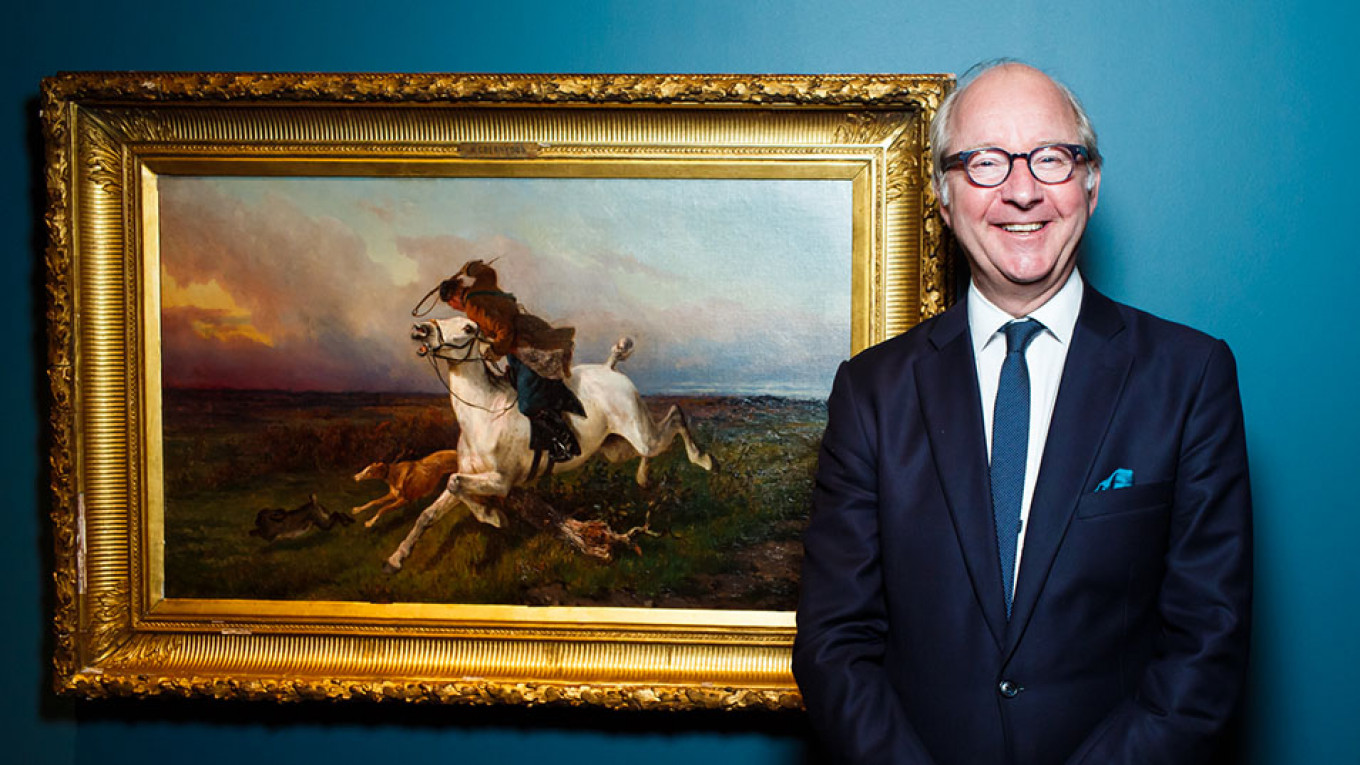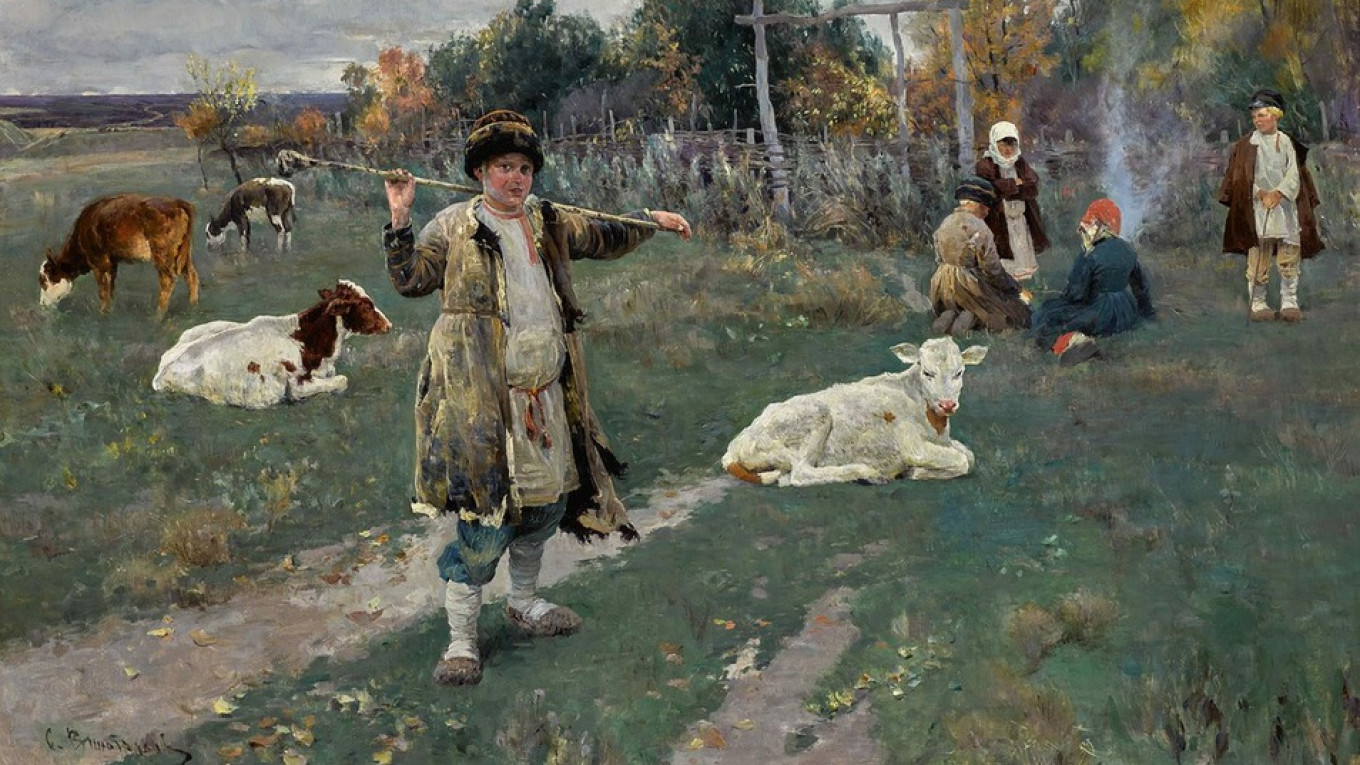Last week Sotheby's organized its traditional preview ahead of the November and December Russian art auctions that will take place in London. For a third year Sotheby's preview took place at the “Ruin” exhibition space at the Museum of Architecture.
Among the displayed works were a rare painting by Georgian primitive artist Niko Pirosmani, which used to be in Austrian writer Stefan Zweig’s collection, and a painting by Nicolai Feshin, a portrait of his daughter made before his immigration to the United States. There were also works by such distinguished painters as Ivan Aivazovsky and Alexander Kuprin, as well as musical instruments from the collection of Mstislav Rostropovich and Galina Vishnevskaya which will be sold at auction at a later date.
The Moscow Times talked to Lord Mark Poltimore, Deputy Chairman of Sotheby's Europe, who has been in the the auction business for 30 years, about what Russian art sells internationally and who the buyers are.
Q: What do Russian oligarchs buy?
A: It’s not only oligarchs who buy from us; we have a huge range of clientele. I think first and foremost Russians like to buy their own, but over the last ten years we’ve seen much more diversity. Russian clients by and large buy big names among impressionists and old masters -- a lot of old masters! I think it’s the influence of the Pushkin Museum and the Hermitage, the great museums of Russia. So it’s Russian art, impressionists and old masters, in that order. Also Russians buy jewelry.
Q: Who buys Russian art?
A: From a westerner point of view, traditional Russian art is bought, I would say, 95% by Russians.
When you get to artists that left to go to Paris after the revolution, like Chagall and Kandinsky, that’s much more international and sells all over the world.
The only thing that’s really international is Faberge, because it’s such an extraordinary brand name. So, Faberge is bought by Asians, by Arabs, by Americans and, of course, by Russians. It’s difficult to find great Faberge at the moment, but it does appear. It was bought a lot by English people in 1900s, and the Queen, of course, has a great Faberge collection. Faberge is known and loved all over the world. So that’s probably the big exception.
Q: Which artists sell well other than Chagall and Kandinsky?
A: Works by Malevich, if we can find them, but it’s not always easy. I think traditional 19th century Russian paintings by Ilya Repin, Ivan Aivazovsky, Valentin Serov — all those big traditional names are bought mainly by Russian clientele. They are very much in demand. But finding great works gets more and more difficult.
Q: What about avant-garde?
A: As you know, there’s a lot of problems with fakes, so people can be very nervous, especially after the exhibition in Ghent, which was controversial [Art experts proved the majority of works at the avant-garde exhibition at the Museum of Fine Arts in Ghent in early 2018 were fakes]. We try to make sure that everything is 100 percent authentic, and we spend a lot of time analyzing work in our own laboratory, such as doing paint analysis. It’s rare to find good avant-garde, but we find them occasionally, and they sell well internationally as long as they have great provenance. At the same time Russia has very strict export laws, and you can’t export [works by] certain artists out of the country.
Q: And non-conformist art? Do works by Ilya Kabakov sell well, for example?
A: Oh yes, if you can, again, find them. The early ones are becoming more and more difficult to get. But even so there are other truly international names such as Bulatov who also does well. We experiment with sales of contemporary works from Ukraine and from Georgia for instance. It’s not always easy to sell and works from this period are usually bought by the local people.

A Message from The Moscow Times:
Dear readers,
We are facing unprecedented challenges. Russia's Prosecutor General's Office has designated The Moscow Times as an "undesirable" organization, criminalizing our work and putting our staff at risk of prosecution. This follows our earlier unjust labeling as a "foreign agent."
These actions are direct attempts to silence independent journalism in Russia. The authorities claim our work "discredits the decisions of the Russian leadership." We see things differently: we strive to provide accurate, unbiased reporting on Russia.
We, the journalists of The Moscow Times, refuse to be silenced. But to continue our work, we need your help.
Your support, no matter how small, makes a world of difference. If you can, please support us monthly starting from just $2. It's quick to set up, and every contribution makes a significant impact.
By supporting The Moscow Times, you're defending open, independent journalism in the face of repression. Thank you for standing with us.
Remind me later.






